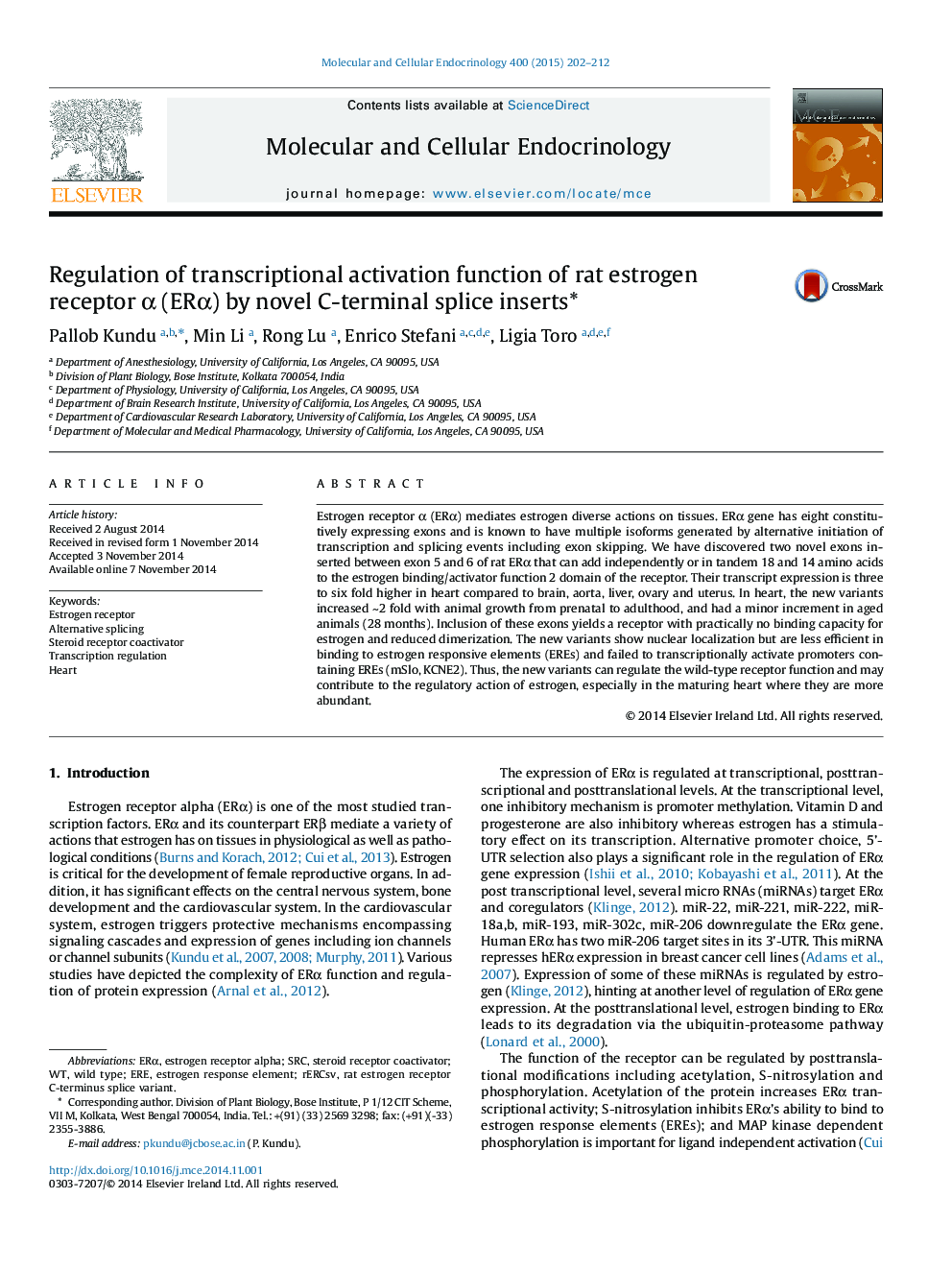| Article ID | Journal | Published Year | Pages | File Type |
|---|---|---|---|---|
| 8477099 | Molecular and Cellular Endocrinology | 2015 | 11 Pages |
Abstract
Estrogen receptor α (ERα) mediates estrogen diverse actions on tissues. ERα gene has eight constitutively expressing exons and is known to have multiple isoforms generated by alternative initiation of transcription and splicing events including exon skipping. We have discovered two novel exons inserted between exon 5 and 6 of rat ERα that can add independently or in tandem 18 and 14 amino acids to the estrogen binding/activator function 2 domain of the receptor. Their transcript expression is three to six fold higher in heart compared to brain, aorta, liver, ovary and uterus. In heart, the new variants increased ~2 fold with animal growth from prenatal to adulthood, and had a minor increment in aged animals (28âmonths). Inclusion of these exons yields a receptor with practically no binding capacity for estrogen and reduced dimerization. The new variants show nuclear localization but are less efficient in binding to estrogen responsive elements (EREs) and failed to transcriptionally activate promoters containing EREs (mSlo, KCNE2). Thus, the new variants can regulate the wild-type receptor function and may contribute to the regulatory action of estrogen, especially in the maturing heart where they are more abundant.
Keywords
Related Topics
Life Sciences
Biochemistry, Genetics and Molecular Biology
Cell Biology
Authors
Pallob Kundu, Min Li, Rong Lu, Enrico Stefani, Ligia Toro,
